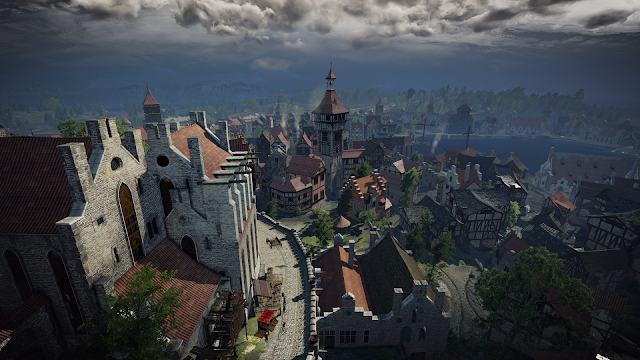Super Smash Bros. Ultimate is kind of quirky on the whole. You could probably even call it incoherent, incongruous, or inconsistent. The game wasn’t made like this by accident, though. Imperfection was part of the point. The development studio responsible for
Smash, Bandai Namco, designed the game around a cultural concept which the Japanese call
wabi-sabi.
The critic Leonard Koren describes this aspect of Japanese culture in
Wabi-Sabi for Artists, Designers, Poets, and Philosophers as an appreciation for things which are “imperfect, impermanent, and incomplete.” This hits the nail right on the head. The term is tough to translate because of its complicated etymology, but
wabi-sabi refers to the beauty of being a bit rough around the edges. You’ll often see it translated as “flawed beauty.” The idea is basically that something sublime exists within imperfection. The best example of
wabi-sabi would have to be the style of pottery which has traditionally been used in the tea ceremony. Because it appeared for the first time in a place called Hagi, this became known as
hagi-yaki by collectors. Pottery in this particular style is asymmetrical in shape and irregular in terms of both color and texture. In other words, imperfection is part of the point.
The development studio behind
Smash, Bandai Namco, gave every aspect of the game a strong sense of
wabi-sabi. This comes through quite clearly in its mechanics, aesthetics, and story.
 |
| Smash is quirky by design |
The mechanics in
Smash are deceptively simple. You basically run and jump around a battle arena while using a combination of melee and ranged attacks to defeat your opponents. The game features over seventy fighters that each have a slightly different skill set, though. Some are slow and strong, but others are quick and weak. Some are powerful up close, but others are best at a distance. Some of them are just good all around. This made keeping things in a perfect state of balance pretty much impossible due to the massive number of variables to consider. (Several fighters were even added to
Smash after the game was released). While the balance isn’t badly out of whack, some fighters definitely have an edge on at least a couple of the others. You might expect it to spoil the experience, but
Smash hardly suffers for this imperfection. What you’re seeing is the wonder of
wabi-sabi at work.
 |
| The mechanics in Smash are all about randomness |
You can also see the wonder of
wabi-sabi at work in the aesthetics. They aren’t exactly what you’d call consistent. Similar to the mechanics, the fighters in
Smash provide a pretty good example of this. Because they come from games which have little in common like
Fire Emblem and
Bayonetta, the fighters in
Smash form a sort of aesthetic hodgepodge, so they lack any kind of consistency in terms of tone. Some fighters even belong to the same series, but are practically poles apart in appearance. While they both belong to the
Zelda series, the Link from
Breath of the Wild for example doesn’t look anything like the Link from
Wind Waker. The former is fairly realistic. The latter is extremely stylized. This aesthetic hodgepodge is definitely imperfect from a traditional point of view, but something about this aspect of the game just works. You might say that it has a flawed beauty to it.
 |
| Smash lacks a consistent aesthetic |
The story in
Smash is hardly inspiring. The game has a campaign, but its narrative lacks any kind of complexity. The story is really just window dressing for the mechanics. The idea is basically that all of the fighters apart from Kirby have been taken captive by an evil being known as Galeem. You have to release them by defeating a series of opponents in various parts of the game world. While its narrative might be simple, the campaign is remarkably well designed when you stop to think about it, though. Since the fighters come from games that each have a story of their own, the designers behind
Smash basically had to bring together several different worlds into a cohesive whole. They did this by having a light touch when it came to complexity. (Heaps of humor, too). In other words, the story isn’t perfect from a traditional point of view, but that’s really what makes it beautiful.
 |
| The story in Smash is purposefully thin |
Bandai Namco imbued every aspect of
Smash with a strong sense of
wabi-sabi. This meant allowing just a little bit of imperfection to exist within its mechanics, aesthetics, and story. The result was a game which is kind of quirky. You might expect this to make it a mess, but
Smash is truly a marvel to behold. This really isn’t in spite of it being an incoherent, incongruous, and inconsistent game, though.
Smash is definitely a bit rough around the edges, but that’s precisely what makes it so pleasing. You could say the same thing about the style of pottery known as
hagi-yaki. Similar to pottery in the
hagi-yaki style, the game is flawed in more ways than one, but a big part of its beauty is actually drawn from this fact. Bandai Namco didn’t make
Smash this way by accident. Imperfection was part of the point.







